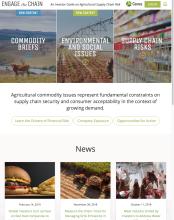Land Library Search
Through our robust search engine, you can search for any item of the over 73,000 highly curated resources in the Land Library.
If you would like to find an overview of what is possible, feel free to peruse the Search Guide.
/ library resources
Showing items 1 through 9 of 54.Land-use change results from the decisions of diverse actors in response to economic and political contexts. Identification of underlying decision-making processes is key to understanding land-use patterns, anticipating trends, and designing effective environmental governance mechanisms.
In recent decades, Serbia has been undergoing a period of post-socialist transition that has significantly altered the value system underlying spatial development due to alteration of ownership frameworks and land use rights.
Image of the ancient cities across the Arab region has been changed The urbanization progress and their subsequent urban changes are of rapid acceleration due to the population increase in the named cities affecting the encompassed old districts in many respects The mentioned changes are forked i
This interactive guide discusses the environmental and social risks and impacts associated with a number of agricultural commodities, which are among the most prominent drivers of deforestation, greenhouse gas emissions and water depletion and pollution.It clarifies actions investors and companie
Municipalities across the United States are prioritizing green stormwater infrastructure (GSI) projects due to their potential to concurrently optimize the social, economic, and environmental benefits of the “triple bottom line”.
The widely applied Importance-Performance Analysis (IPA) provides relatively simple and straightforward techniques to assess how well the attributes of a good or service perform in meeting the expectations of consumers, clients, users, and visitors.
Nature-based recreation is among the most relevant ecosystem services supplied by urban green infrastructure, affecting citizens’ physical and mental wellbeing.
In the effort to achieve the Sustainable Development Goals (SDGs) related to food, health, water, and climate, an increase in pressure on land is highly likely.
For centuries, farmers, herders, fishers and foresters have developed diverse and locally adapted agricultural systems managed with time tested, ingenious techniques. These practices have resulted in a vital combination of social, cultural, ecological and economic services to humankind.




